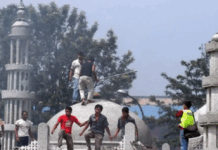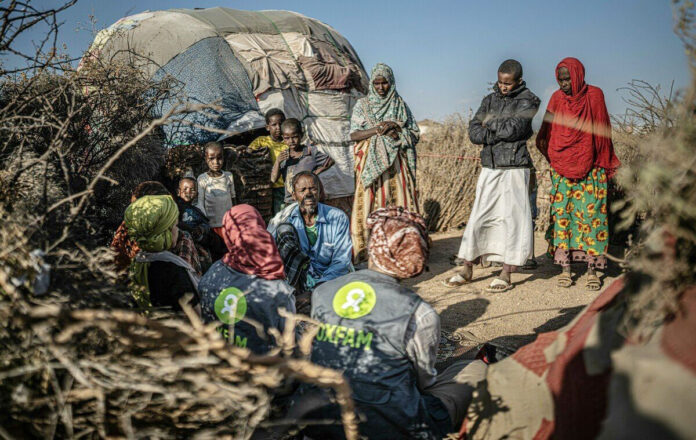Tuberculosis is not a disease of the past. It has not disappeared, nor has it become rare. If anything, it has silently tightened its grip on the most vulnerable segments of our population, camouflaged by poverty, stigma, and neglect. Being a medical student, spending hours each day in public hospital wards, I began to notice an unsettling pattern. So many patients, particularly from the lower socioeconomic class, casually mention a history of tuberculosis like one would mention the flu. For some, it is still active, for others it is a chronic memory, and for many, it is undiagnosed and untreated. In almost every ward I rotate through, someone either has TB or is recovering from it. Yet, the general public remains dangerously unaware of just how widespread and lethal this disease remains.
We cannot afford to keep ignoring tuberculosis simply because its sufferers are too quiet, too poor, or too ashamed to be heard. As long as TB thrives in our margins, it remains a threat to all of us. No one is safe from an airborne disease in a society that lets it grow unchecked. The real tragedy is not that tuberculosis is deadly, but that we have the tools to fight it, yet we choose to look away
Pakistan ranks fifth among countries with the highest burden of tuberculosis, according to the World Health Organization. It accounts for approximately 5.8 percent of the global TB burden, with over 600,000 new cases annually. What is even more disturbing is that nearly 100,000 of these cases are among children. Drug-resistant TB is also rising. Multidrug-resistant TB (MDR-TB) affects around 11,000 people annually in Pakistan. This type is much harder and costlier to treat. The presence of this resistant strain, particularly in communities with irregular access to medication, incomplete treatment, or lack of education, is a ticking time bomb. The disease continues to thrive in silence because the most impacted voices are the ones least heard: the poor, the uneducated, the malnourished, and those who live in overcrowded housing with little ventilation and no means to afford consistent healthcare.
In government hospitals, TB is an everyday reality, not a rare exception. The patients come in with chronic coughs, weight loss, and night sweats, but TB is rarely the first diagnosis considered— sometimes not even the second or third, unless explicitly suspected. Often, the disease remains undiagnosed for months, during which time it spreads within families and communities.
The disease hides in plain sight, disguised as chronic bronchitis, as general weakness, as malnutrition. In one instance during my rotation in a pulmonology ward, a young woman who had miscarried three pregnancies was discovered to have longstanding genital TB. She had never been screened, and no doctor had suspected it, even after years of unexplained infertility.
One of the most disheartening aspects is how healthcare workers, particularly students, young doctors, and nurses, are constantly exposed to TB without adequate protection.
Masks are rarely worn, N95s are considered a luxury, and isolation wards are often non-functional. Patients are examined, nebulized, and admitted without any proper TB screening, especially in emergency units and internal medicine wards. We perform examinations, procedures, even CPR on patients who later test positive. The occupational hazard is enormous, and yet it is underreported and understated in our training. Most of us carry the risk unknowingly, because no one talks about it.
The tragedy is compounded by social stigma. Patients often delay seeking care out of fear that their diagnosis will isolate them. TB is still seen as a curse, a disease of the poor, or one that makes someone unfit for marriage. In rural areas, women suffering from TB are often silenced by families who fear social rejection. In urban slums, men who develop TB may lose their daily-wage jobs, leading to a devastating chain of financial and emotional collapse. Because of this fear, many patients do not complete the long six to nine months of treatment. The national TB control programme provides free medication, but the burden of travel, stigma, and side effects often leads patients to abandon their regimen, resulting in relapse or drug resistance.
To truly address TB, we must treat it not just as a medical condition but as a social emergency. Active screening programmes in high-risk communities, mandatory TB testing in public hospitals, and contact tracing of patients’ families should be standard practice. School-based TB education programmes can help reduce stigma and encourage early care-seeking behaviour. Most importantly, healthcare workers must be protected. Government hospitals must implement protective protocols: proper ventilation, provision of masks, and early isolation for symptomatic patients.
Healthcare training needs reform too. TB should not just be part of an infectious disease lecture. It must be treated as the reality it is, with regular workshops, real-case discussions, and emphasis on protection protocols. Awareness campaigns should use real stories from patients, survivors, and healthcare workers to humanize the disease and shift public perception.
We cannot afford to keep ignoring tuberculosis simply because its sufferers are too quiet, too poor, or too ashamed to be heard. As long as TB thrives in our margins, it remains a threat to all of us. No one is safe from an airborne disease in a society that lets it grow unchecked. The real tragedy is not that tuberculosis is deadly, but that we have the tools to fight it, yet we choose to look away.























